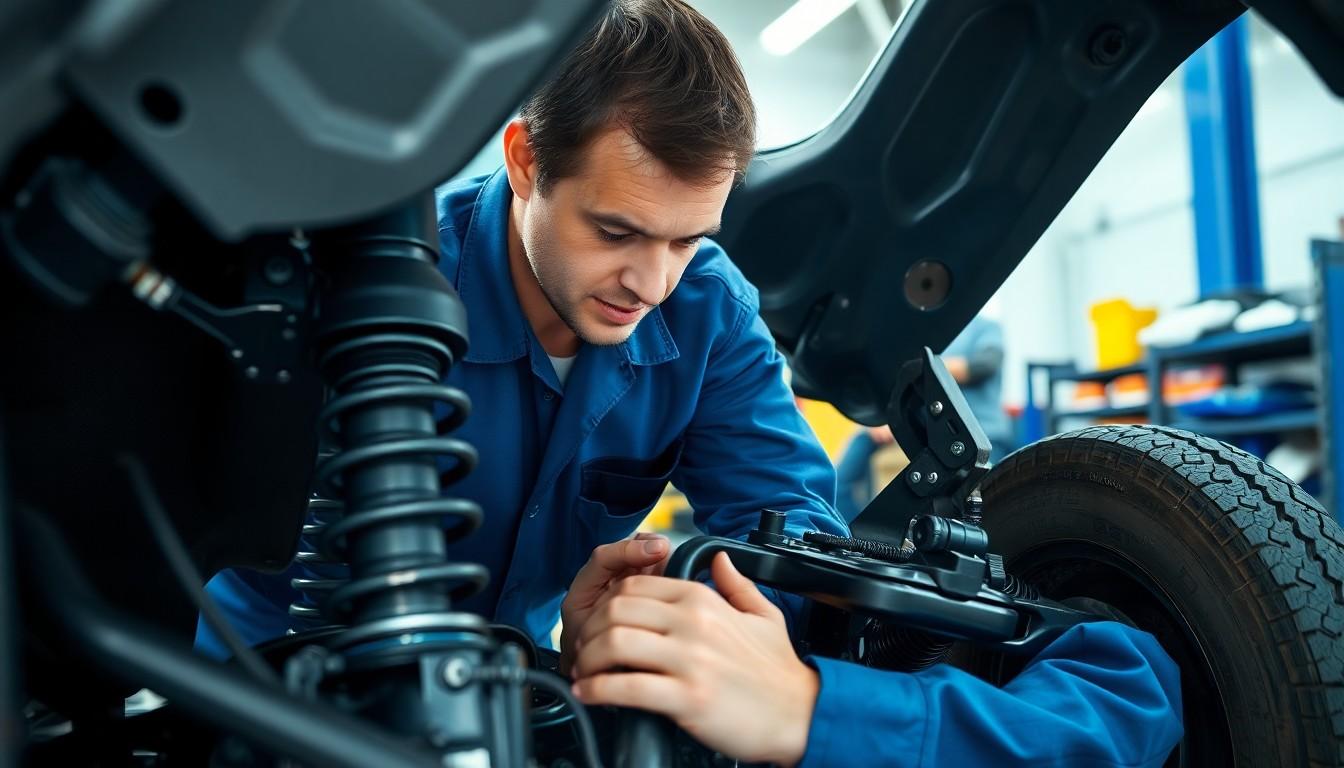Wondering if your vehicle’s struts are located in the front, back, or both? You’re not alone. This common question confuses many car owners, especially when troubleshooting suspension issues or planning maintenance.
We’ve created this comprehensive guide to clarify exactly where struts are positioned in different vehicle types. Understanding your car’s suspension system isn’t just about satisfying curiosity—it’s essential knowledge that can save you time and money when diagnosing problems. Whether you’re hearing unusual noises over bumps or planning to replace worn components, knowing the location of your struts is the first step toward proper vehicle care.
What Are Struts and Their Function in Vehicles
Struts serve as crucial components of a vehicle’s suspension system, combining structural support with shock absorption capabilities. These mechanical devices maintain the vehicle’s stability while absorbing impact from road irregularities, effectively preventing excessive bouncing and swaying. Unlike traditional shock absorbers, struts integrate multiple suspension elements into a single unit, including the coil spring, spring seat, shock absorber, and steering knuckle.
The primary functions of struts include supporting vehicle weight, dampening spring oscillations, and maintaining proper wheel alignment during driving. They’re engineered to control the vertical movement of wheels by resisting compression and rebound forces encountered on various road surfaces. Vehicle handling characteristics such as cornering ability, braking performance, and overall ride comfort depend significantly on properly functioning struts.
Most struts contain a piston rod that moves inside a pressure tube filled with hydraulic fluid, creating resistance that controls suspension movement. This hydraulic dampening system works by forcing oil through calibrated passages as the suspension compresses and extends. Modern strut designs often incorporate gas-pressurized chambers to prevent fluid aeration and maintain consistent performance across different driving conditions.
Recognizing worn struts becomes essential for vehicle safety, as deterioration can lead to increased stopping distances, excessive body roll during turns, and uneven tire wear patterns. Common signs of strut failure include continuous bouncing after hitting bumps, nose-diving during braking, and unusual noises when driving over rough terrain. Regular inspection of these components helps maintain optimal vehicle performance and extends the lifespan of related suspension parts.
Front vs. Rear Strut Placement: The Common Configuration
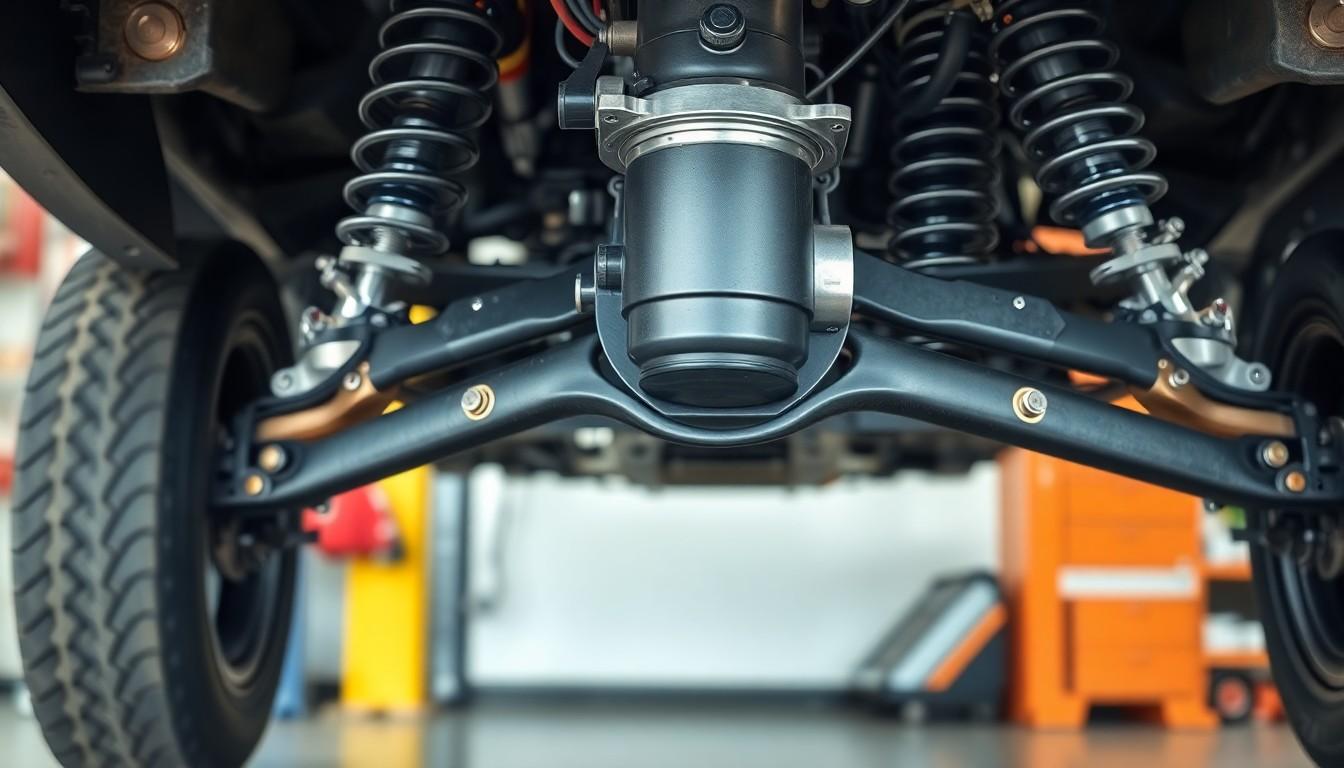
Strut placement varies across different vehicle models, with exact configurations designed to optimize performance, handling, and comfort. Understanding where struts are typically located helps when diagnosing suspension issues or planning maintenance.
Why Most Vehicles Have Struts in the Front
Front strut configurations dominate the automotive industry, especially in vehicles with independent suspension systems and front-wheel drive layouts. These components serve as critical structural elements of the suspension, replacing upper control arms and ball joints found in conventional systems. This integration creates a lighter, more space-efficient design that’s particularly valuable in the front suspension where steering components must also fit.
Front struts bear important loads due to several factors:
- They handle the majority of braking forces
- They support engine weight in most vehicle configurations
- They absorb impact forces during steering maneuvers
- They stabilize the vehicle during directional changes
The structural role of front struts makes them indispensable for maintaining proper alignment geometry while delivering responsive handling characteristics. Their design efficiently manages the complex forces encountered at the front wheels, providing both structural support and dampening functions in a single unit.
When Vehicles Use Struts in the Rear
Rear struts appear in many vehicle designs, though they’re less universal than their front counterparts. Vehicles equipped with independent rear suspension often use rear struts to enhance ride quality and handling precision. This configuration is particularly common in front-wheel drive vehicles where packaging efficiency in the rear is a priority.
Interestingly, rear struts sometimes experience accelerated wear compared to front struts in vehicles that frequently carry heavy cargo loads. This additional stress manifests as a softer feel when bouncing the rear of the vehicle during a basic suspension check.
Vehicle manufacturers carry out various suspension configurations based on:
- Vehicle purpose (passenger comfort vs. performance handling)
- Weight distribution characteristics
- Drivetrain layout (FWD, RWD, AWD)
- Cost and manufacturing complexity considerations
Some vehicles feature hybrid setups with struts in front and traditional shock absorber systems in the rear, or occasionally the reverse arrangement. The exact configuration depends entirely on the vehicle’s design objectives and suspension architecture. This variability highlights the importance of consulting vehicle-exact information when diagnosing suspension issues or selecting replacement components.
How to Identify if Your Vehicle Has Front or Rear Struts
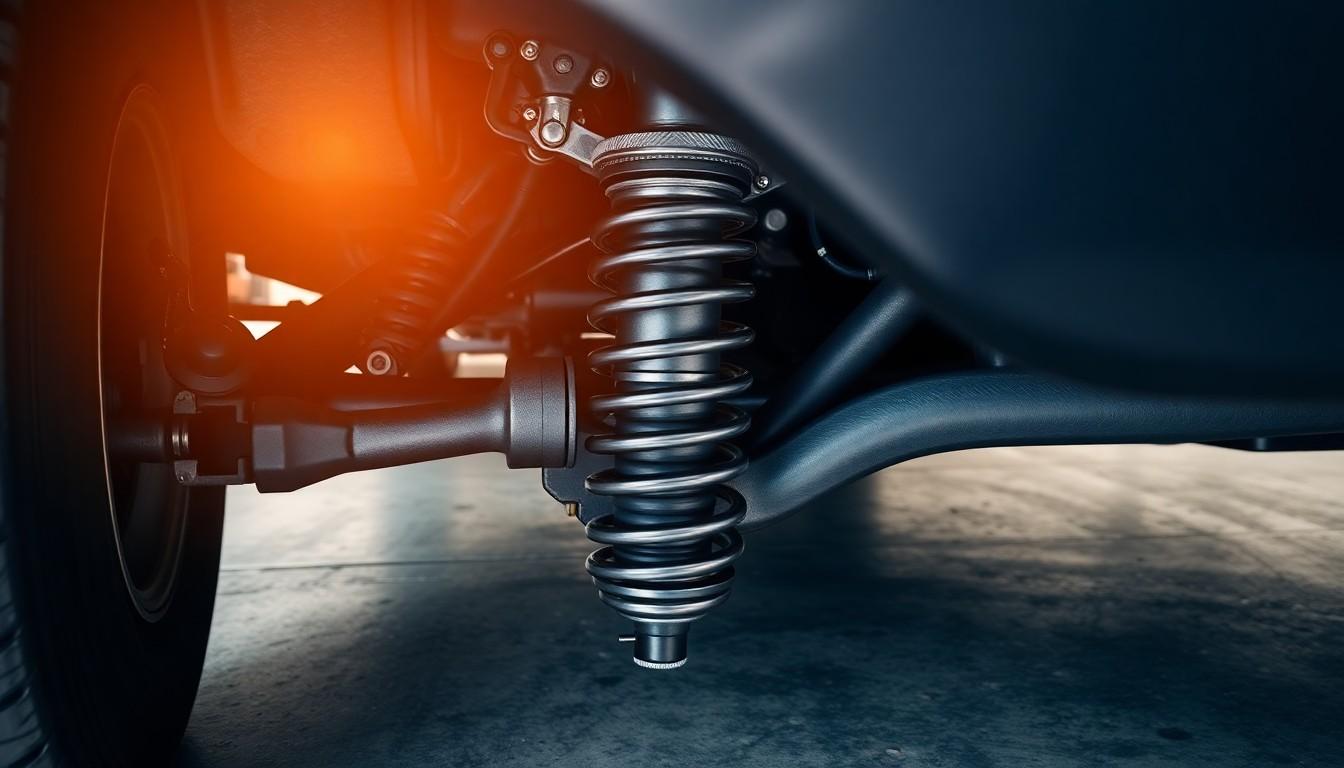
Identifying whether your vehicle has struts in the front, rear, or both locations doesn’t require professional mechanical knowledge. Several straightforward methods can help you determine your suspension system’s configuration with confidence.
Visual Inspection Methods
Visual inspection offers the quickest way to identify strut presence in your vehicle. Look behind the tires for an integrated unit containing both a coil spring and shock absorber—this combined assembly indicates a strut. Front struts typically connect to the steering knuckle and sit within the fender well, forming part of the steering system. Rear struts, though less common, appear similar but don’t integrate with steering components. The front suspension more frequently utilizes struts, particularly in modern vehicles with independent suspension systems. When examining your vehicle, pay attention to the structural components that connect the wheel assembly to the vehicle’s frame, as struts serve both as suspension elements and structural support.
Consulting Vehicle Documentation
Your vehicle’s documentation provides definitive information about suspension configuration. The owner’s manual contains diagrams and descriptions of your suspension system, often located in the maintenance or specifications section. Vehicle-exact repair manuals offer even more detailed technical information about your suspension components and their locations. Manufacturer websites frequently list technical specifications that clarify whether your vehicle uses struts in the front, rear, or both positions. Service records from previous maintenance work might also reference suspension work, indicating the type of components in your vehicle. These documentation sources eliminate guesswork and provide manufacturer-exact details about your vehicle’s suspension design.
Benefits of Different Strut Configurations
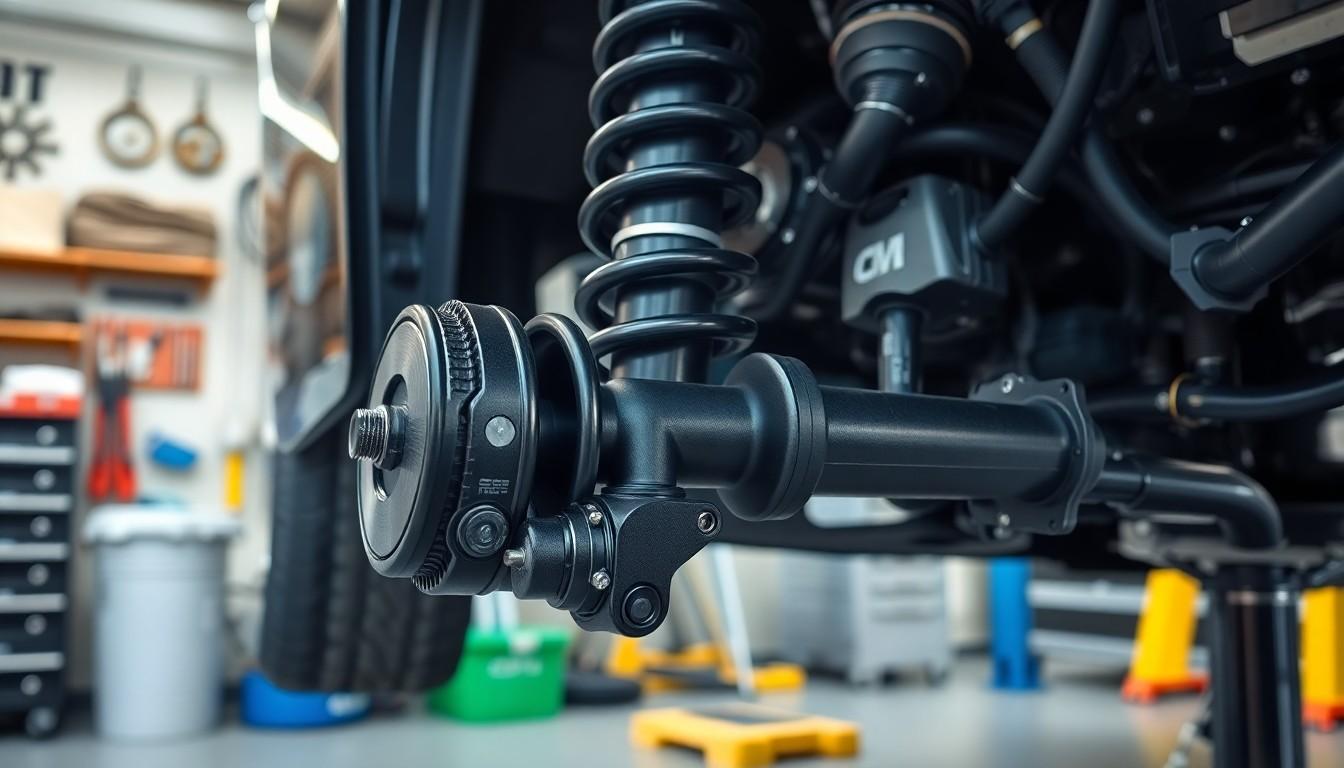
Strut configurations offer distinct advantages based on their placement and design in a vehicle’s suspension system. Each configuration serves exact purposes that impact vehicle performance, handling, and comfort.
Front Strut Advantages
Front struts provide essential benefits that directly affect your vehicle’s performance and safety. They maintain optimal tire contact with the road during steering and braking maneuvers, improving overall vehicle control. Front struts effectively distribute the vehicle’s weight, preventing excessive front-end dipping during sudden stops. The positioning of these components allows them to absorb road impacts while supporting the substantial weight of the engine and transmission components. Vehicles equipped with quality front struts demonstrate improved steering response and precision, particularly when handling corners or changing lanes at highway speeds. These structural elements also contribute significantly to maintaining proper wheel alignment, reducing uneven tire wear and extending the life of your tires.
Rear Strut Advantages
Rear struts contribute significantly to ride comfort by absorbing road irregularities before they transmit to the passenger compartment. They prevent excessive rear-end lift during acceleration and minimize dipping during braking, maintaining consistent vehicle level under varying conditions. Properly functioning rear struts enhance stability during high-speed driving, reducing dangerous sway or fishtailing movements. The suspension damping provided by rear struts helps distribute impact forces evenly across the vehicle chassis, protecting sensitive components from excessive vibration damage. Vehicles with independent rear suspension utilizing struts typically deliver superior handling on uneven road surfaces compared to those with simpler suspension designs. Rear struts also play a crucial role in maintaining proper vehicle balance during cornering, preventing excessive body roll that could compromise stability and control.
Signs of Failing Struts: Front vs. Rear Symptoms
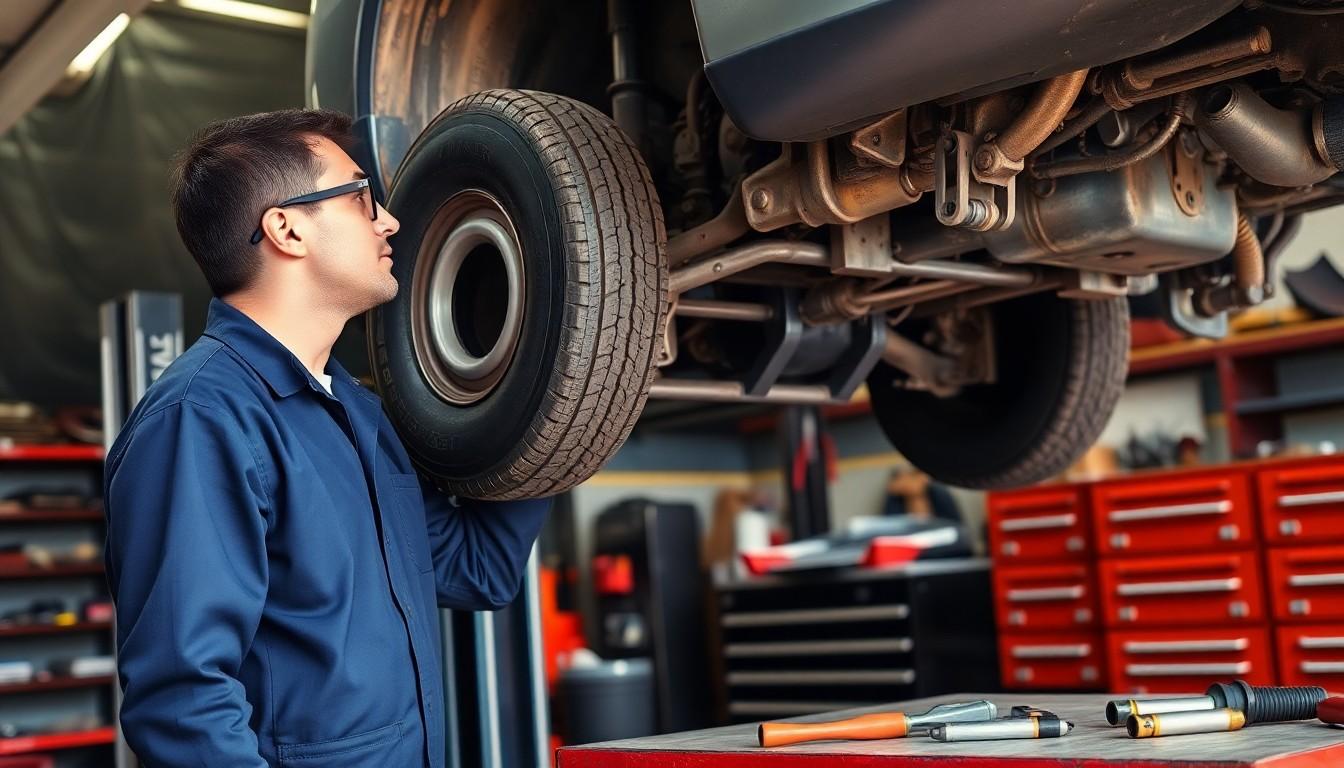
Front Struts
Front strut failure manifests through several distinct symptoms that affect your vehicle’s performance and safety. Uneven tire wear appears as one of the earliest warning signs, resulting from improper alignment and suspension issues caused by worn struts. Steering becomes noticeably affected, with the vehicle potentially pulling to one side during normal driving conditions or requiring more effort to control.
Excessive bouncing or nose-diving occurs when braking or traversing bumps in the road, indicating compromised shock absorption capabilities. Clunking or knocking sounds emanating from the front suspension area represent another telltale sign of deteriorating struts, especially when driving over uneven surfaces or making turns.
Rear Struts
Rear strut problems display their own set of distinctive symptoms that differ from front strut issues. Sagging rear ends serve as a visible indicator of failing rear struts, altering your vehicle’s ride height and overall appearance. The ride quality transforms, becoming noticeably softer or bouncier when you press down on the rear of the vehicle.
Driving stability decreases significantly, with the vehicle exhibiting swerving or instability, particularly when handling bumpy roads or making sudden maneuvers. Increased brake diving happens during deceleration, where the rear of your vehicle dips more dramatically than normal, suggesting the struts can no longer properly manage weight transfer during braking.
For vehicles showing signs of both front and rear strut wear but requiring staged replacement due to budget constraints, addressing the rear struts first often makes sense as they typically deteriorate more quickly in many vehicle models.
Replacing Struts: Considerations for Front and Rear Installations

Replacing struts requires careful evaluation to determine whether front or rear struts should be addressed first. The decision depends primarily on your vehicle’s exact symptoms and the condition of the existing components. Front struts typically have a more direct impact on steering and braking performance, making them critical for overall driveability and safety.
When to Replace Front Struts First
Front strut replacement takes priority when you’re experiencing handling issues like poor steering response or uneven tire wear. These components bear important responsibility for maintaining vehicle stability during braking and cornering. Poor front strut performance compromises your ability to control the vehicle effectively, especially during emergency maneuvers.
When to Replace Rear Struts First
Rear struts should be replaced first if they show greater wear while front struts remain in acceptable condition. Symptoms like a bumpy ride, instability during braking, or sagging rear suspension indicate deteriorating rear struts. Many drivers overlook rear strut maintenance, but these components play a crucial role in maintaining proper vehicle balance and stability.
Installation Requirements
The installation process for struts involves precise alignment with the suspension knuckle and proper torque application. After replacing either front or rear struts, wheel alignment is necessary to ensure proper tire wear and handling characteristics. Professional installation tools like spring compressors ensure safety during the replacement process, as compressed springs store important potential energy.
Cost and Maintenance Timing
Strut replacement costs vary based on vehicle make, model, and whether you choose OEM or aftermarket components. Many mechanics recommend replacing struts in pairs (both fronts or both rears) to maintain balanced suspension performance. Complete strut assembly replacements (including springs and mounts) offer easier installation but come at a higher price point than replacing just the strut cartridge.
Conclusion
Understanding the location and function of struts in your vehicle is essential for proper maintenance and safety. While most vehicles have struts in the front with independent suspension systems the configuration varies based on vehicle design and purpose.
Remember to check for signs of wear regularly and consult your vehicle documentation when in doubt. Whether replacing front or rear struts prioritize the ones showing more important wear and always replace them in pairs for balanced performance.
By knowing where your struts are located and recognizing when they need attention you’ll maintain better vehicle handling prevent excessive tire wear and ensure a safer driving experience. This knowledge eventually helps you make informed decisions about your vehicle’s maintenance needs.
Frequently Asked Questions
Are struts located in the front or rear of a vehicle?
Struts can be located in the front, rear, or both depending on the vehicle model. Most vehicles have front struts, especially those with front-wheel drive and independent suspension systems. Rear struts are less common but are found in vehicles with independent rear suspension to improve ride quality and handling.
How can I tell if my car has front or rear struts?
You can identify struts through visual inspection behind the tires. Look for an integrated unit containing both a coil spring and shock absorber. Front struts connect to the steering knuckle and sit within the fender well. For definitive information, consult your vehicle’s owner’s manual or repair documentation.
What are the signs of failing front struts?
Signs of failing front struts include uneven tire wear, difficulty steering, excessive bouncing after hitting bumps, and clunking noises when driving over rough roads. You may also notice decreased braking efficiency and increased nose-diving during stops. These symptoms affect your vehicle’s handling and safety.
What are the signs of failing rear struts?
Failing rear struts typically cause a sagging rear end, noticeably altered ride quality, decreased stability during lane changes, and increased brake diving. You might also experience excessive bouncing over bumps and unusual noises from the rear suspension when driving on uneven surfaces.
Should I replace front or rear struts first?
If budget constraints require staged replacement, prioritize based on which set shows more wear. Replace front struts first if you notice steering issues or uneven tire wear. Replace rear struts first if they show greater deterioration, which is common in many vehicle models. Always replace struts in pairs for balanced performance.
How important are struts to my vehicle’s performance?
Struts are critical to your vehicle’s performance and safety. They support vehicle weight, dampen spring oscillations, ensure proper wheel alignment, and maintain tire contact with the road. Properly functioning struts improve handling, provide a comfortable ride, reduce braking distances, and extend tire life.
How often should struts be replaced?
Most manufacturers recommend inspecting struts every 50,000 miles and replacing them between 50,000 and 100,000 miles, depending on driving conditions. However, replacement intervals vary by vehicle model and driving habits. Regular inspections can help identify worn struts before they compromise safety and performance.
Is wheel alignment necessary after strut replacement?
Yes, wheel alignment is necessary after replacing struts. The installation process affects the suspension geometry, which directly impacts wheel alignment. Proper alignment after strut replacement ensures even tire wear, optimal handling, and straight tracking when driving on level roads.

